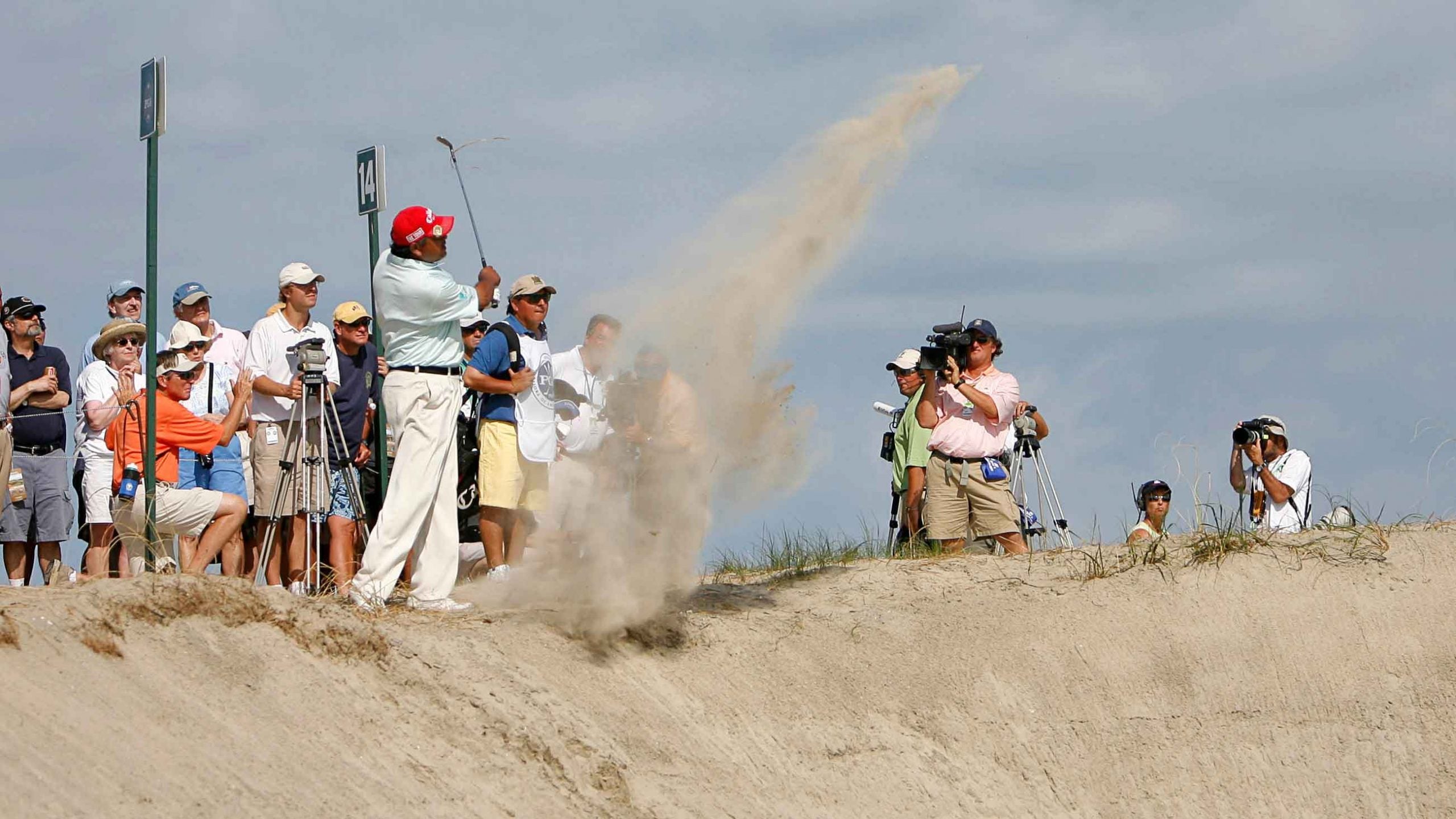A picture might be worth a thousand words, but numbers can say plenty, too.
For instance: 79.1 and 155.
Those are the course and slope ratings, respectively, for the tournament tees at the Ocean Course at Kiawah Island, host site of this week’s PGA Championship.
What do those figures mean?
PGA Championship 2021: Take a hole-by-hole tour of Kiawah Island’s brilliant Ocean CourseBy: James Colgan
Course rating measures the difficulty of a course from a specific set of tees for a scratch golfer, while slope measures how much more proportionately difficult those same tees are for a bogey golfer. If you’re keeping score at home, you can mark it down this way: your scratch-golfer buddy, pegging it from the tips at Kiawah, would be expected to average 79.1 on his or her eight best of 20 rounds. A 79 would be a good score. Calculating slope is a more complex matter, but it’s safe to say that the result of a bogey golfer playing from the tips on the Ocean Course would not be pretty: 155 is the maximum slope rating any course can be assigned.
So, yeah, it’s one tough track — in fact, on a wind-whipped day, like in the wild 2nd round of the 2012 PGA Championship, the Ocean Course is about as unforgiving a test as you’ll find on U.S. soil.
But why, exactly, is it such a beast?
We asked Scott Hovde, director of course rating and handicap research for the United States Golf Association, to explain the challenges of the Ocean Course in language and numbers we can all understand.
1. It’s long
Size matters. In assessing a course, raters evaluate the difficulty of every obstacle a golfer will encounter. While trees and sand and water, no matter how imposing, can be avoided, “distance is the one thing you always have to deal with,” Hovde says. There’s no getting around it. From the tips, the Ocean Course plays 7,849 yards, with multiple par-4s that are well north of 400 yards.

Under the formula raters rely on, bogey golfers are assumed to be able to cover a maximum of 370 yards in two shots every time; when they really flush it, they can hit it 390 in two shots (this formula changes at elevations of more than 2,000 feet), but not always. That means that there are a number of par-4s on the Ocean Course that a bogey golfer, playing from the back tees, has little hope of reaching in regulation.
Even for a scratch player (for them, 470 is the standard two-shot distance, with 490 yards the assumed max they can reach now and then), several holes require everything they’ve got.
2. It’s hazard-laden
Not everything about the Ocean Course is penal. The property is relatively flat, so awkward stances are fairly rare and there’s little chance of being fooled by elevation changes. But there’s a ton of trouble. Every hole has some form of lateral obstacle in the form of bunkers, water, waste areas or some combination of those hazards.

Ten holes feature some degree of forced carry, with 6 of those carries over water, meaning you’re penalized stroke and distance if you don’t make it over. Though not all of the carries are a serious concern for scratch players, they are more worrisome for bogey golfers. That’s another reason the slope rating is so high.
3. It’s windy
Wind factors into a rating when the prevailing mid-season wind speeds are 5 miles-per-hour or higher. At Kiawah, 10-12 mile-per-hour winds are the mid-season average. Of course, they can blow harder, as they did during the 2012 PGA Championship, when gusts got up to 40 miles per hour. (Another fun-fact about wind is that its difficulty increases exponentially; a 10-12 mile-per-hour wind, for example, has more than twice the impact of a 5-6 miler-per hour wind, Hovde says, while a 20 miles per hour wind might have 10 times the impact).

By championship standards, Kiawah’s fairways are somewhat generous, with widths ranging in yards from the high 20s to the low 30s (the championship average is closer to 25-30 yards). In other words, there’s room out there on the Ocean Course. But finding the short grass is made more difficult by those steady breezes. The same is true for every target a golfer is trying to hit.
4. Its greens are well-guarded
Good golfers make sand shots look so easy. Higher handicappers? Not so much. The greens at Kiawah aren’t wildly contoured, nor are they kept Oakmont-quick. But they are raised and staunchly guarded. On multiple holes, Hovde notes, there is sand around more than half of the green. Sometimes it’s a waste area. Other times it’s a bunker, and a number of those bunkers are deep and steep. When a bogey golfer finds one of those hazards, it’s not uncommon for them to stay a while.
Latest In Travel

Josh Sens
Golf.com Editor
A golf, food and travel writer, Josh Sens has been a GOLF Magazine contributor since 2004 and now contributes across all of GOLF’s platforms. His work has been anthologized in The Best American Sportswriting. He is also the co-author, with Sammy Hagar, of Are We Having Any Fun Yet: the Cooking and Partying Handbook.










